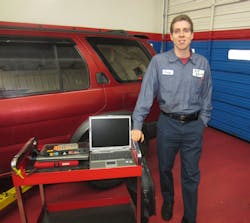Why are U.S. roads more dangerous than Canada's but safer than Russia's?
Have you ever watched one of the videos online that show crazy driving in Russia? If not, take a quick look.
The roads in Russia are extremely unsafe for all the stereotypical reasons you might expect: snowy weather, long rural and suburban stretches of highway with people driving at unsafe speeds, substance abuse and bad roads.
In fact, the roads are so dangerous in Russia it's a mainstream part of culture to drive around with a "dash cam" at all times, video recording everywhere you go. The result? Tons of videotape of catastrophic car crashes.
Now, two things in these videos stick out to me. First, there are many examples where Russians exhibit a reckless lack of respect for human life. An example of this is a huge dump truck driving around without one of its front tires and with the dump body in the air, effectively lifting the front of the truck off the road.
A nation that experienced a Soviet dictatorship and Stalin-era genocides might understandably have a very different view of what's safe and what's not.
Another thing I noticed is that when some of these vehicles crash, or before they crash, their wheels literally fly off the car. The only way this is possible is that if the people who work on the cars are not properly torqueing the lug nuts.
Being that the average income in Russia is about one third of that in the U.S, it is safe to say that many Russians work on their own cars. Chances are they are not properly tightening their wheels to their vehicles or doing other important facets of automotive work.
The result? Russia experiences 18.5 road fatalities per 100,000 people.
What's the ratio in the U.S.? With our nation's relatively well kept roads, somewhat more temperate weather and generally more conscientious drivers, in 2012, the number was about 13.7 road fatalities per 100,000 people.
Being that Russia is the geographically largest country in the world and the U.S. is the third largest, what about the second largest, Canada? Canada, with its Russian-like weather and population density, but U.S.-market vehicles, has the smallest rate of the three: 9.2.
What's so special about Canada? It's not like it doesn’t have inclement weather like Russia. Certainly, the lower rates of alcohol and drug abuse may play a role.
So, then why aren't the roads in the U.S. safer than Canada when we have better weather, more of an urban demographic where roads don't permit high speeds and better maintained roads? Is it substance abuse?
Canadian statistics actually reflect that its drug epidemic (a usage rate of 9.1 percent of the adult population) is worse than that in the U.S. (6.5 percent). People text and drive, probably more, in Canada too. What's the difference between the two countries then?
In Canada, in order to work on cars, you need to be licensed. In Ontario, every technician needs to complete a three-year apprenticeship, three years of theory-based schooling and other hands-on tasks to be certified to work on vehicles.
The U.S. is like Russia in that anybody can work on a car, without certification, and do whatever they want.
With road fatalities in the U.S. increasing, consumers should be seeking out repair facilities with certified and trained staff and that use quality parts. Instead, most people simply look for the cheapest price.
Sadly, this mentality is probably the chief reason why there are so many "driving in Russia" dashcam videos on Youtube where this wrongheaded mentality is on display for the world to see.

